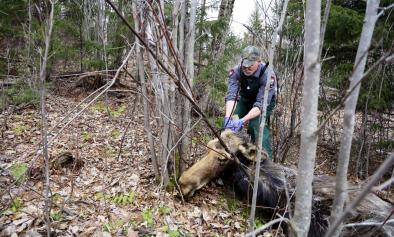Science Source
Large-scale dieback of mangroves in Australia’s Gulf of Carpentaria: a severe ecosystem response, coincidental with an unusually extreme weather event
We don’t yet know what role human-caused climate change played in these particular weather events or El Niño. But the unprecedented extent of the dieback, the confluence of extreme climate events and the coincidence with the bleaching of the Great Barrier Reef mean the role of climate change will be of critical interest in the global response to mangrove decline.
Drs Penny van Oosterzee and Norman Duke, study co-authors
- Records and documents the most severe and notable instance ever reported of sudden and widespread dieback of mangrove vegetation
- States that between late 2015 and early 2016, extensive areas of mangrove tidal wetland vegetation died back along 1000 km of the shoreline of Australia’s remote Gulf of Carpentaria
- States that the cause is not fully explained, but the timing was coincident with an extreme weather event; notably one of high temperatures and low precipitation lacking storm winds
- Finds that the dieback was severe and widespread, affecting more than 7400 ha or 6% of mangrove vegetation in the affected area from Roper River estuary in the Northern Territory, east to Karumba in Queensland.
- Finds that there was an unusually lengthy period of severe drought conditions, unprecedented high temperatures and a temporary drop in sea level
- Finds that although consequential moisture stress appears to have contributed to the cause, this occurrence was further coincidental with heat-stressed coral bleaching
- Describes the effect and diagnostic features of this severe dieback event in the Gulf, and considers potential causal factors
Related Content
Science Source
| Global Change Biology
Decadal-scale phenology and seasonal climate drivers of migratory baleen whales in a rapidly warming marine ecosystem
Daniel E. Pendleton, Morgan W. Tingley, Laura C. Ganley et al
Headline

May 19, 2022 | Climate Nexus Hot News
Climate Change Great For Winter Ticks, Very Bad For Moose Calves
Science Source
Climate change increases cross-species viral transmission risk
Colin J. Carlson, Gregory F. Albery, Cory Merow et al
Science Source
| Journal of Animal Ecology
Climate change affects bird nesting phenology: Comparing contemporary field and historical museum nesting records
John M. Bates, Mason Fidino, Laurel Nowak-Boyd et al


